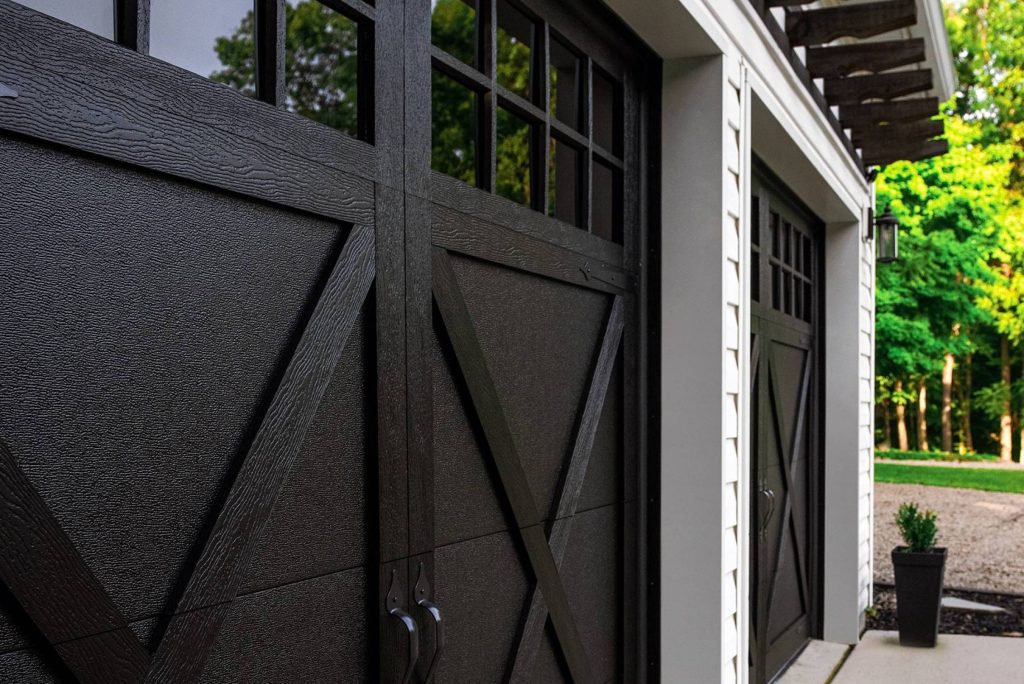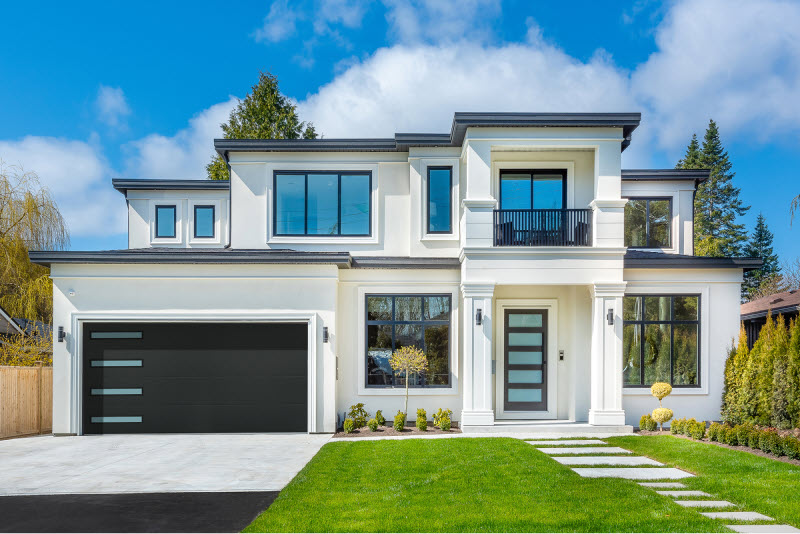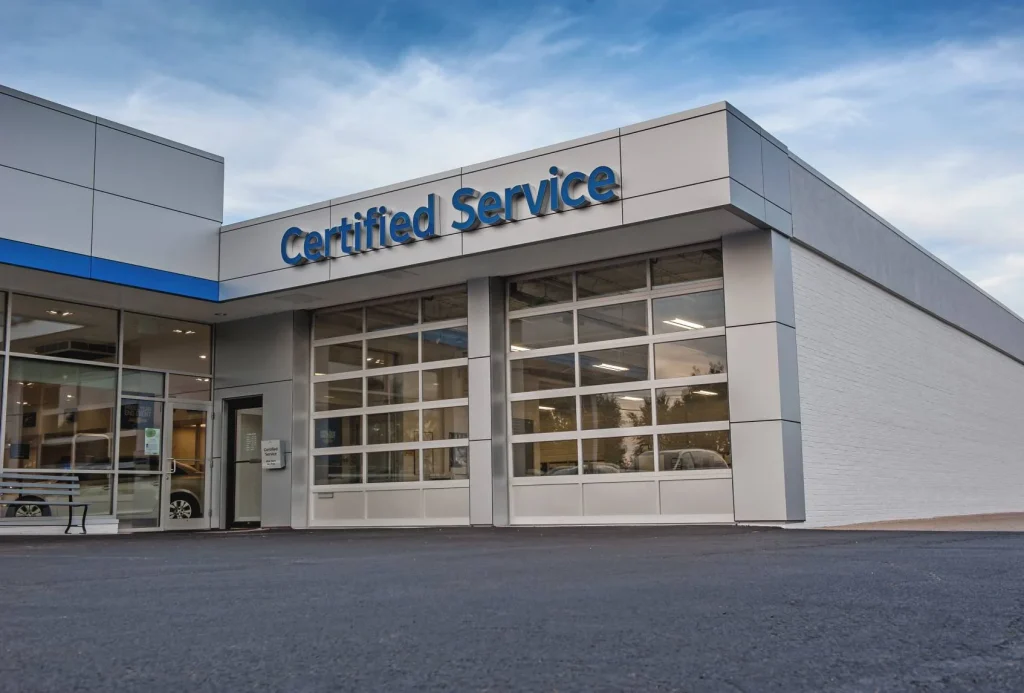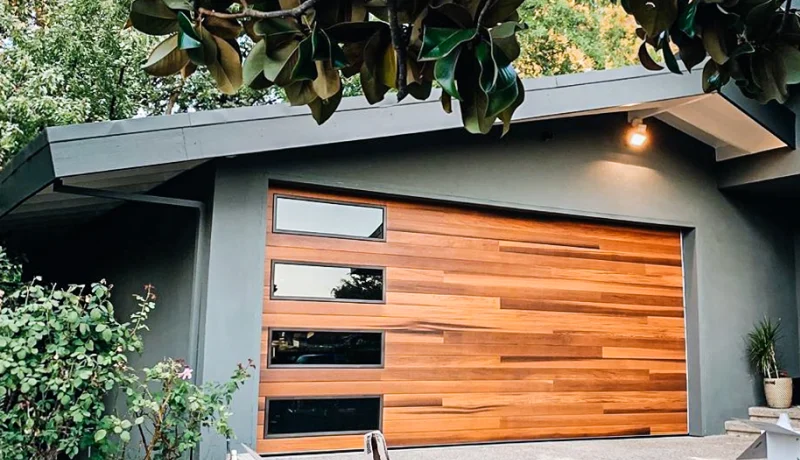Insulated Garage Doors in Southfield, MI
Energy-Efficient Doors for Superior Temperature Control
Locally Based, Regionally Trusted
Since 2017
Schedule A Service Request
We Serve Businesses In And Around The Following Cities:
About Insulated Garage Doors
Insulated Garage Doors: A Comprehensive Guide for Southfield's Commercial Properties
The Rising Importance of Insulated Garage Doors in Southfield's Commercial Sector
In the vibrant commercial landscape of Southfield, insulated garage doors have become a crucial facet of business operations. As the architectural and climatic demands of the region evolve, these energy-efficient solutions offer a blend of functionality and cost-effectiveness, capturing the attention of business owners across the city. Insulating garage doors isn't merely an upgrade—it's a necessity driven by the need for energy conservation, enhanced security, and noise reduction in bustling commercial settings.
Southfield's weather, characterized by its chilly winters and humid summers, presents unique challenges for maintaining optimal indoor conditions. Commercial properties, especially those interacting with goods-sensitive environments, require innovative solutions that cater to both climatic and security needs. Enter the insulated garage door; a modern gateway designed to tackle these challenges head-on. Investing in these doors not only impacts the energy bills but also influences the operational efficiency and environmental footprint of a business.
A Deep Dive into the Benefits of Insulated Garage Doors
The benefits of incorporating insulated garage doors into commercial properties in Southfield are multifaceted. Primarily, the energy efficiency they offer cannot be overstated. With double-layer insulated doors, properties can ensure better temperature regulation, minimizing the excessive use of heating or air conditioning systems. This feature is especially vital in Southfield, where temperature fluctuations can lead to substantial energy expenditure if not properly managed.
Beyond the notable energy savings, the structural integrity of insulated garage doors plays a significant role. Insulated steel garage doors offer durability that regular doors simply cannot match. They help in mitigating noise pollution—a frequent concern for businesses located near busy streets or industrial zones. Such thermal garage doors are not only resistant to wear and tear but also provide a quieter work environment, crucial for maintaining focus and productivity.
Another significant aspect is enhanced security. Commercial facilities need to protect valuable inventory and assets. Weatherproof garage doors, often bolstered by robust insulation, add an extra layer of security, deterring unauthorized access and potential theft. This dual benefit of protection from both weather elements and security threats makes them a wise investment.
Understanding the Installation Process of Insulated Garage Doors
The process of installing an insulated door for a garage, especially in a commercial setting, requires careful planning and execution. Southfield businesses seeking these installations should consider several critical factors, from door size and material to the specific insulating properties needed for their operations. Engaging with specialists such as D&J Contracting ensures that installations are seamless and tailored to the unique needs of the business.
Typically, the installation begins with a comprehensive assessment of the property. This step involves evaluating the existing door structures, measuring dimensions, and determining the most appropriate insulation type. The preference for double-layer insulated doors or alternatives like insulated steel garage doors often depends on specific requirements such as noise control or extra security.
Once the parameters are set, professional installers take precise measurements to customize the doors, ensuring a perfect fit. During installation, specific attention is paid to sealing techniques. Proper sealing is pivotal for achieving maximum energy efficiency and ensuring that weatherproofing features are effective. Post-installation, D&J Contracting, known for their expertise in Southfield, provides routine maintenance checks to keep the doors in optimal working condition.
Exploring Practical Applications and Real-World Success Stories
Many commercial properties in Southfield have already experienced the transformative benefits of insulated garage doors. For instance, warehouses often utilize these solutions for maintaining stable temperatures—critical when storing temperature-sensitive goods. By curbing energy wastage, companies have reported significant reductions in overhead costs, directly impacting their bottom line.
Retail stores, on the other hand, leverage the thermal insulation capabilities to create pleasant environments for both customers and employees. Beyond aesthetics, these stores benefit from the improved security that insulated garage doors provide, leading to lower insurance premiums and enhanced peace of mind.
Manufacturing units, frequently positioned near noise-prone areas, also enjoy the acoustic benefits. The reduction in noise penetration provided by insulated garage doors fosters a conducive work environment, boosting employee morale and efficiency. Such practical applications, witnessed across Southfield, are testimonials to the wide-reaching advantages of adopting this innovative solution.
The Reason to Choose Insulated Garage Doors for Your Business
As businesses in Southfield navigate complexities like fluctuating temperatures, security threats, and environmental considerations, insulated garage doors emerge as a robust solution. Their multifaceted benefits, from energy savings to noise reduction, attract commercial entities aiming for operational excellence and sustainability.
By choosing top professionals such as D&J Contracting for installation and maintenance, businesses are not only investing in their infrastructure but also ensuring long-term savings and enhanced property value. These doors don't just represent a necessary component of a commercial property but are a strategic investment contributing to overall business success. With ongoing advancements in door insulation technology, the future looks promising for businesses ready to embrace this change. For those considering a prudent upgrade, the call to consult with specialists is natural and timely.
Insulated Garage Doors Gallery



Call Us Today to receive your Free Quote for Insulated Garage Doors in Southfield
Serving: Southfield, Michigan

About Southfield, Michigan
Southfield was surveyed in 1817 according to the plan by Michigan territorial governor Lewis Cass. The first settlers came from nearby Birmingham and Royal Oak, Michigan, as well as New York and Vermont. The area that became Southfield was settled by John Daniels in 1823. Among the founders were the Heth, Stephens, Harmon, McClelland and Thompson families.
Town 1 north, 10 east was first organized as Ossewa Township on July 12, 1830, but the name was changed to Southfield Township 17 days later. The township took its name from its location in the "south fields" of Bloomfield Township. A US post office was established in 1833 and the first town hall built in 1873.
The Southfield Fire Department was formed on April 6, 1942, and the Southfield Police Department in 1953. In the 1950s, cities and villages began to incorporate within the township, including Lathrup Village in 1950, and Beverly Hills in 1957. Most of what was left of the township was formally incorporated as a city on April 28, 1958, to protect it from annexation attempts by Detroit; whites who had migrated to the suburbs did not want to be associated with Detroit's expanding black community.
City Hall was built in 1964 as part of the new Civic Center complex, which also became home to Southfield's police headquarters. The Civic Center was expanded in 1971 to include a sports arena with swimming pool. Evergreen Hills Golf Course was added in 1972, and in 1978, a new public safety building, the Southfield Pavilion, and a new court building were added. In 2003, an expanded and redesigned Southfield Public Library opened to the public on the Civic Center grounds, featuring state-of-the-art facilities. Outside the Civic Center complex, Southfield has municipal parks and recreation facilities, largely developed in the 1970s, including Beech Woods Recreation Center and John Grace Community Center.
Duns Scotus College is now the home of Word of Faith Christian Center. In 2016, the site was the center of local controversy over a proposed oil drilling site. Due to sustained opposition and environmental concerns, the plan was cancelled.
According to the United States Census Bureau, the city has an area of 26.28 square miles (68.06 km), of which 26.27 square miles (68.04 km) is land and 0.01 square miles (0.03 km) (0.04%) is water.
The main branch of the River Rouge runs through Southfield. The city is bounded to the south by Eight Mile Road, its western border is Inkster Road, and to the east it is bounded by Greenfield Road. Southfield's northern border does not follow a single road, but lies approximately along Thirteen Mile Road. The city is bordered by Detroit and Redford Township to the south, Farmington Hills to the west, Franklin, Bingham Farms, and Beverly Hills to the north and Royal Oak, Berkley and Oak Park to the east. The separate city of Lathrup Village sits as an enclave in the eastern part of the city, completely surrounded by Southfield.
| Census | Pop. | Note | %± |
|---|---|---|---|
| 1960 | 31,531 | — | |
| 1970 | 69,298 | 119.8% | |
| 1980 | 75,608 | 9.1% | |
| 1990 | 75,745 | 0.2% | |
| 2000 | 78,322 | 3.4% | |
| 2010 | 71,758 | −8.4% | |
| 2020 | 76,618 | 6.8% | |
| U.S. Decennial Census 2010 2020 | |||
| Race / Ethnicity (NH = Non-Hispanic) | Pop 2010 | Pop 2020 | % 2010 | % 2020 |
|---|---|---|---|---|
| White alone (NH) | 17,537 | 16,126 | 24.45% | 21.05% |
| Black or African American alone (NH) | 50,181 | 53,713 | 69.95% | 70.10% |
| Native American or Alaska Native alone (NH) | 135 | 132 | 0.19% | 0.17% |
| Asian alone (NH) | 1,217 | 1,790 | 1.70% | 2.34% |
| Native Hawaiian or Pacific Islander alone (NH) | 16 | 33 | 0.02% | 0.04% |
| Other race alone (NH) | 154 | 535 | 0.21% | 0.70% |
| Mixed race or Multiracial (NH) | 1,542 | 2,580 | 2.15% | 3.37% |
| Hispanic or Latino (any race) | 957 | 1,709 | 1.33% | 2.23% |
| Total | 71,739 | 76,618 | 100.00% | 100.00% |
As of the census of 2010, there were 71,739 people, 31,778 households, and 18,178 families residing in the city. The population density was 2,730.8 inhabitants per square mile (1,054.4/km). There were 35,986 housing units at an average density of 1,369.9 units per square mile (528.9 units/km). The racial makeup of the city was 70.3% African American, 24.9% White, 0.2% Native American, 1.7% Asian, 0.4% from other races, and 2.4% from two or more races. Hispanic or Latino of any race were 1.3% of the population.
There were 31,778 households, of which 26.7% had children under the age of 18 living with them, 33.5% were married couples living together, 19.4% had a female householder with no husband present, 4.4% had a male householder with no wife present, and 42.8% were non-families. 37.9% of all households were made up of individuals, and 13.7% had someone living alone who was 65 years of age or older. The average household size was 2.22 and the average family size was 2.96.
The median age in the city was 42. 20.5% of residents were under the age of 18; 8.5% were between the ages of 18 and 24; 24.7% were from 25 to 44; 29.2% were from 45 to 64; and 16.9% were 65 years of age or older. The gender makeup of the city was 44.7% male and 55.3% female.
As of the census of 2000, there were 78,296 people, 33,987 households, and 19,780 families residing in the city. The population density was 2,984.6 inhabitants per square mile (1,152.4/km). There were 35,698 housing units at an average density of 1,360.8 units per square mile (525.4 units/km). The racial makeup of the city was 54.22% African American, 38.83% White, 3.09% Asian, 0.20% Native American, 0.03% Pacific Islander, 0.64% from other races, and 2.99% from two or more races. 1.19% of the population were Hispanic or Latino of any race.
Of the city's 33,987 households, 25.3% had children under the age of 18 living with them, 40.2% were married couples living together, 14.3% had a female householder with no husband present, and 41.8% were non-families. 36.2% of all households were made up of individuals, and 11.9% had someone living alone who was 65 years of age or older. The average household size was 2.27 and the average family size was 3.01.
The age distribution in the city's population was spread out, with 21.6% under the age of 18, 7.9% from 18 to 24, 30.6% from 25 to 44, 24.8% from 45 to 64, and 15.2% who were 65 years of age or older. The median age was 38. For every 100 females there were 84.9 males. For every 100 females age 18 and over, there were 80.9 males.
The median income for a household in the city was $51,802, and the median income for a family was $64,543. Males had a median income of $48,341 versus $37,949 for females. The per capita income for the city was $28,096. About 5.8% of families and 7.4% of the population were below the poverty line, including 8.2% of those under age 18 and 10.2% of those age 65 or over.
The most common occupations for people in Southfield are a mix of both white- and blue-collar jobs. Overall, Southfield is a city of sales and office workers, professionals and managers. A relatively large number of people living in Southfield work in office and administrative support (16.00%), sales jobs (10.93%), and management occupations (9.72%). Southfield's populace is very well-educated relative to most cities and towns in the nation. Whereas 21.84% of the average community's adult population holds a 4-year degree or higher, 38.73% of Southfield's adults have a bachelor's degree or advanced degree. Southfield's per capita income in 2010 was $28,995.
In 2002 Southfield had 42,259 black people, the second-largest black population in Metro Detroit and third-largest in Michigan.
As of 2011, many African Americans from Detroit were moving into Southfield and other suburbs of Oakland and Macomb counties. Tensions have occurred between existing middle-class blacks in Southfield and incoming Detroiters.
As of 2001 many Chaldo-Assyrians live in Southfield; they are descended from the ancient Nineveh region of the Assyrian homeland in North Iraq. The Chaldean Federation of America, an umbrella organization for most regional Chaldean groups, is in Southfield. As of that year, the largest Chaldean church, by number of congregants, was based here. The city also had the area's sole Chaldean retirement home.
Southfield is also home to the Detroit area's Consulate-General of Iraq.
Since the rapid suburbanization of the 1950s and 1960s, many Jewish Americans from Northwest Detroit (particularly the Dexter-Davison neighborhood) moved to Southfield and other inner-ring suburbs such as Oak Park and Huntington Woods. Congregation Shaarey Zedek moved from Detroit to Southfield in 1962 to a modernist synagogue building designed by Percival Goodman. The city was also previously home to Congregation Beth Achim on 12 Mile Road until its merger with Congregation Adat Shalom. The building was later purchased and demolished by a Jewish day school. Though much of the Conservative and Reform Jewish population has since spread out to suburbs such as West Bloomfield and Farmington Hills, the city maintains a thriving Orthodox Jewish and Lubavitch community. It is also home to Farber Hebrew Day School – Yeshivat Akiva, a kosher grocery store, and many independent synagogues.
Southfield uses the council-manager form of government, and thus is governed by a City Council consisting of seven council members. The city council appoints a City Administrator, who manages the day-to-day operations of the city. The popularly elected mayor, who does not vote on council actions, has the right to veto council actions and appoints the city's planner, assessor, attorney, and members of various commissions. The city's clerk and treasurer are also popularly elected officials. All these officials hold nonpartisan positions.
- City officials
- Mayor Kenson Siver (term expires November 2025)
- City Council
- Council President Linnie Taylor (term expires November 2025)
- Council President Pro Tem Michael "Ari" Mandelbaum (term expires November 2023)
- Council Member Nancy Banks (term expires November 2023)
- Council Member Daniel Brightwell (term expires November 2023)
- Council Member Lloyd C. Crews (term expires November 2025)
- Council Member Myron Frasier (term expires November 2023)
- Council Member Coretta Houge (term expires November 2023)
- Other elected officials
- City Clerk Allyson Bettis (term expires November 2023)
- City Treasurer Irv M. Lowenberg (term expires November 2025)
| District | Representative | Party | Since |
|---|---|---|---|
| 12th | Rashida Tlaib | Democratic | 2023 |
| District | Senator | Party | Since |
|---|---|---|---|
| 7th | Jeremy Moss | Democratic | 2019 |
| District | Representative | Party | Since |
|---|---|---|---|
| 5th | Natalie Price | Democratic | 2023 |
| 18th | Jason Hoskins | Democratic | 2023 |
| 19th | Samantha Steckloff | Democratic | 2023 |
| District | Commissioner | Party | Since |
|---|---|---|---|
| 17 | Yolanda Smith Charles | Democratic | 2023 |
| 18 | Linnie Taylor | Democratic | 2023 |
Southfield Public Schools operates area public schools. Southfield Senior High School for the Arts and Technology (commonly known as Southfield A&T) is the district's sole high school. There were originally two high schools in the district, Southfield and Southfield-Lathrup, but they were consolidated after the 2015–16 school year. Students living in parts of Northern Southfield attend schools in the Birmingham City School District, while students living in the southeast corner of Southfield attend schools in the Oak Park School District. Southfield A&T also competes in the Oakland Activities Association in the Red Division for high school sports, and has membership in the MHSAA.
AGBU Alex and Marie Manoogian School is an Armenian charter in Southfield.
Farber Hebrew Day School – Yeshivat Akiva is a private Jewish school in Southfield.
Southfield Christian School is a private school in Southfield.
Southfield Public Library operates public libraries in the city.Providence Medical Center offers residency training in various fields of medicine.
Southfield is home to eight colleges, including Lawrence Technological University, Abcott Institute, Everest Institute and Oakland Community College. The Specs Howard School of Media Arts is in Southfield.
